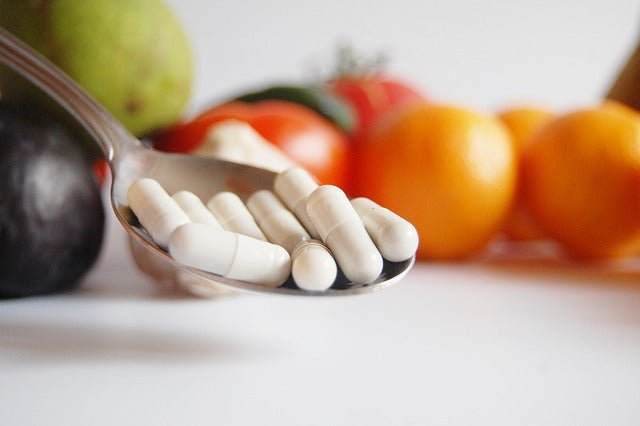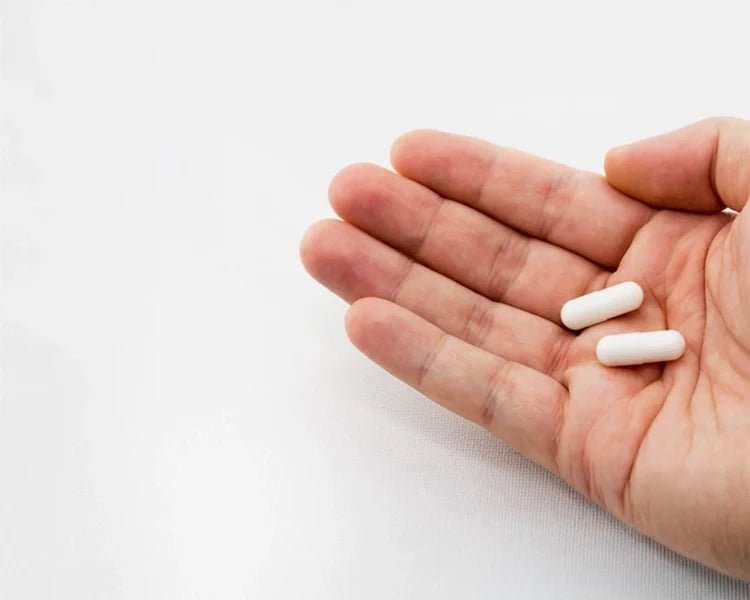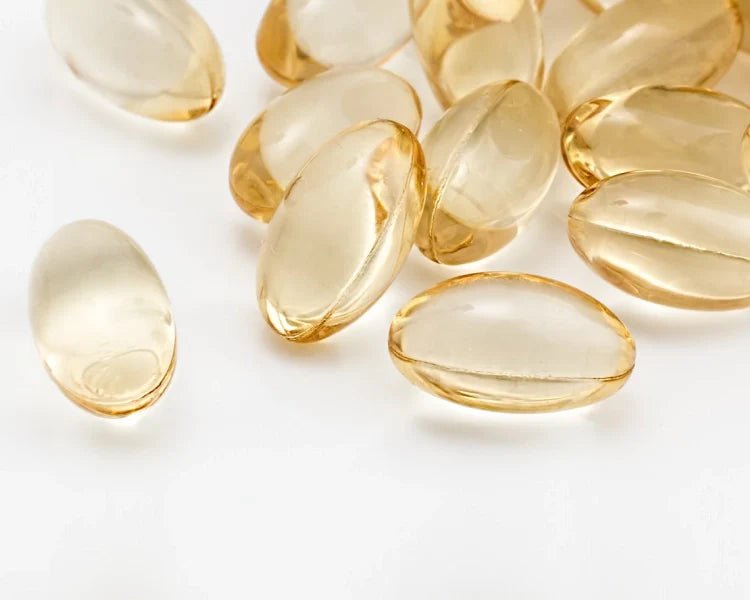Education
Selenium
Selenium is a trace mineral in the human diet. There is also little knowledge in society about the impact of this element on human health. It is definitely not as popular as magnesium or zinc, although it is equally necessary in our diet. Humanity became aware of the existence of selenium over two centuries ago, when it was isolated by the Swedish chemist Jacob Brezelius. What more do we know about him now? First of all, it is an essential component of enzymes involved in oxidation-reduction processes and cytochrome, thanks to which it protects cell membranes, and therefore the cells themselves, against oxidative stress. Hence its beneficial effect on the immune system. People suffering from any thyroid disorder have certainly come across information about its key role in the metabolism of this gland's hormones. The problem of male infertility allowed us to draw attention to the role of selenium in proper spermatogenesis, where this ingredient is necessary for the formation of sperm with proper structure and the desired motility. Less known properties of selenium include its influence on the proper functioning of the muscular system, including the heart muscle. They are so important that in regions of the world exposed to extreme deficiencies of this element, we are dealing with a specific cardiomyopathy (Keshan disease). We will also find information confirming the impact on the low birth weight of newborns whose mothers were deficient in this microelement. There are interesting reports about the effect of selenium on the nervous system, where deficiencies manifest themselves in mood declines. And finally, related to the antioxidant effect, it influences the development/inhibition of some cancer diseases, e.g. prostate, lung or colon cancer. Selenium deficiency may manifest itself through: - hair loss and brittle nails, - nervous system disorders (low mood, depression), - fatigue, - weakness of skeletal muscles and heart muscle, - weakened immunity, - thyroid abnormalities, - male fertility disorders. Where to look for selenium? The element is taken from the soil by plants, which become food for herbivorous animals. Theoretically, both animal and plant food can be its source. Foods recommended for deficiencies are most often: offal (kidneys), eggs, dairy products, sea fish, mushrooms, garlic and Brazil nuts. The latter, generally considered to be the richest source, obviously do not come from our region, and when buying them we may not be 100% sure whether they actually come from areas rich in this element. In practice, in Polish latitude, we deal with low selenium content in the soil, which results from the geographical location. The rocks from which the soil is formed in our native areas are very low in selenium. Additionally, the acidic nature of these soils makes it difficult for plants to absorb the said mineral. Supplementation may be the solution to replenish the deficiencies. The preparations available on the market include both organic forms (l-selenomethionine) and inorganic forms, e.g. sodium selenate. The daily recommended intake of selenium for adults is 55 mcg. However, supplements may contain a dose almost four times higher, up to 200 mcg. When supplementing selenium, it is worth remembering that it is a trace element for humans, which means that there is a small difference between a therapeutic and toxic dose. Therefore, despite potential deficiencies, when deciding on supplementation, it should be used very carefully, in accordance with the dictum of Paracelsus Everything is poison and nothing is poison. Only the dose makes a substance not a poison. Marta Wcześniak BIBLIOGRAPHY: Piotrowska "Content of selenium in cultivated soils of Poland", Roczniki Gleboznaczne T XXXX, No. 1, Warsaw 1984 Golonko, B. Matejczyk "Two faces of selenium, selected aspects of the biological activity of selenium" Civil and Environmental Engineering 9 (2018) Ratajczak, M. Gietka-Czemel "The role of Selenium in the human body" Advances in Medical Sciences 2016 XXXIX(12) Resolution No. 7/2021 of the Team for Dietary Supplements of 28/10/2021
Learn moreAre French fries and chips a health hazard?
Fried foods, especially those based on carbohydrate products, are an integral part of our diet. However, more and more research indicates that the frying process may produce acrylamide - a chemical compound that may pose a risk to human health. In this article, we will explore the health effects of acrylamide, the products in which it is present, and present medical sources that confirm this risk. Organizations such as the International Agency for Research on Cancer (IARC) and the World Health Organization (WHO) have classified acrylamide as a carcinogen. What is acrylamide? Acrylamide is a chemical compound produced in the process of thermal processing of carbohydrate products, such as potatoes, French fries, bread, as well as coffee and some cereal products. It is produced by the reaction of amino acids with sugars in the presence of high temperature. High concentrations of acrylamide can be found in burnt or heavily browned foods. Where is acrylamide found? Primarily in carbohydrate products subjected to high temperatures during frying or baking. Examples of products include: French fries, chips, potato pancakes, bread, cookies, roasted coffee. Acrylamide in research Scientific research and assessments by health institutions clearly emphasize the potential danger associated with acrylamide. If possible, it is worth limiting the consumption of heavily burnt or roasted foods to minimize the risk of exposure to this carcinogenic substance. Deep frying carbohydrate products, although providing culinary pleasure, leads to the formation of acrylamide, a substance harmful to human health. To reduce the risk, it is worth choosing less burnt and more delicately prepared foods. Marta Wcześniak Medical Sources and Research: EFSA (European Food Safety Authority). (2015). EFSA statement on the presence of acrylamide in food. Tareke, E., Rydberg, P., Karlsson, P., Eriksson, S., & Törnqvist, M. (2002). Acrylamide: a cooking carcinogen? National Cancer Institute. (2020). Acrylamide and Cancer Risk. National Toxicology Program. (2021). Report on Carcinogens, 15th Edition.
Learn morePainkillers and health
Year by year, sales statistics of painkillers increase, according to many of them, in recent years by up to 250%! Pain is an inherent part of the human experience, and pain medications are often the first choice for relieving symptoms. However, their excessive and regular use may have adverse consequences for human health. It is worth understanding the different types of painkillers, their potential side effects and the causes of pain in order to approach the topic responsibly. Types of Painkillers: NSAIDs (non-steroidal anti-inflammatory drugs): Examples are ibuprofen, diclofenac. They have anti-inflammatory and analgesic effects by inhibiting enzymes responsible for inflammation. They may cause gastrointestinal problems. SIDE EFFECTS: May cause gastrointestinal problems, ulceration, bleeding. Paracetamol: Has an analgesic and antipyretic effect. Its excess can damage the liver. SIDE EFFECTS: Too high a dose or given for too long may damage the liver. Opioids: Strong painkillers such as morphine or oxycodone. They can lead to addiction and have a depressing effect on the respiratory system. SIDE EFFECTS: Risk of addiction, respiratory depression, drowsiness. DON'T IGNORE THE PAIN! Pain can be a signal from the body that something is wrong. Pain symptoms in the head, joints, spine or abdomen may be caused by various reasons, such as injuries, infections, chronic diseases or improper habits. Ignoring pain can worsen your condition and delay proper diagnosis. DO YOU EXPERIENCE PAIN REGULARLY? Consult a doctor - pain is intense, frequent or persistent, it is worth consulting a doctor to rule out serious health problems. ATTENTION! Don't overuse painkillers: Use medications only as directed by your doctor or as directed on the package. Adopt healthy habits - a healthy diet, regular physical activity and avoiding stress can help reduce pain; in many cases, recurrent weakness, nausea or headaches result from DEHYDRATION or lack of adequate food during the day. Remember that a healthy approach to pain involves recognizing its cause, not just masking the symptoms with painkillers. When in doubt, it is always a good idea to consult your doctor to ensure that you receive appropriate medical care. Mata Wcześniak Bibliography: American Heart Association. (2020). Nonsteroidal Anti-Inflammatory Drugs (NSAIDs). National Institute on Drug Abuse. (2020). Opioids. Mayo Clinic. (2021). Pain Medications: Prescription pain relievers, OTC pain relievers and topical products. Harvard Health Publishing. (2019). The hazards of too much acetaminophen. Mayo Clinic. (2021). Pain Management: Pain basics. Harvard Health Publishing. (2020). When Pain Relievers Cause More Headaches.
Learn moreSleep disorders and their impact on the course and control of diabetes
Diabetes is a very common disease nowadays. It is called a civilization disease or a non-communicable epidemic of the 21st century. About 3 million people suffer from the disease in Poland, and approximately 440 million in the world, which translates into 1.6 million deaths annually due to it. The disease increases mortality but also deteriorates the quality of life. Diabetes that is improperly treated and poorly controlled causes very serious complications, mainly cardiac ones - more frequent heart attacks, strokes, atherosclerosis of arterial vessels, and, as a consequence of these changes, an increase in the number of lower limb amputations, cases of kidney failure, and diabetic retinopathy. Peripheral polyneuropathy is a very painful symptom, affecting mainly the feet and significantly worsening the patient's quality of life. Currently, an individual approach to a patient with diabetes is emphasized, because each case is different. Each patient struggles with diabetes at different stages and degrees of advancement, uses different antidiabetic drugs or insulin therapy, has a different lifestyle, work pattern, ability to perform physical activity or follow an appropriate diet, which is so important in diabetes. Despite increasingly better treatment methods, modern drugs and insulins, new insulin pumps and continuous glucose monitoring (CGM) systems, good diabetes control and avoiding hyper- or hypoglycemia are still influenced by many elements of the patient's daily life. Regularity, repetition, consistency of eating, working and resting times, avoiding excessive stress, worrying, living in a hurry, as well as the ability to get good and healthy sleep are very important. The latest diabetes recommendations of the PTD emphasize the role of sleep, its duration and quality on the course of diabetes. Sleep disorders affect diabetes in two ways. On the one hand, they worsen its balance, causing morning hyperglycemia, increased insulin resistance, and certain neurological disorders that persist during the day regarding concentration, memory, and emotion. On the other hand, diabetes, especially insulin therapy or traditional, older drugs such as sulfonylurea derivatives, generate glycemic disturbances at night and impair the quality of sleep. Sleep disorders in patients with diabetes and their adverse impact on health parameters The journal Diabetologia conducted a meta-analysis on the incidence of sleep disorders in type 2 diabetes and their impact on factors such as glycemic control, micro and macrovascular complications, depression, mortality and quality of life. The authors, based on the available literature in the PubMed database, asked the extent to which the treatment of sleep disorders in patients with type 2 diabetes can improve the mentioned health factors. The review included both observational and experimental studies. The results showed that insomnia (39%), obstructive sleep apnea (55-86%), and restless legs syndrome (8-45%) occurred more often than in the general population without diabetes. Moreover, it has been shown that sleep disorders have a significantly negative impact on glycemic control and increase the percentage of glycated hemoglobin HbA1c. The reason for the increase in glycemia after a bad night's sleep is believed to be an increase in the amount of stress hormones, mainly cortisol, which causes metabolic disorders, insulin resistance, slower metabolism, difficulty maintaining optimal body weight, and additional snacking at night or in the morning. Repeated sleepless nights increase your cardiovascular risk. It has been proven that people who sleep little have higher levels of CRP (acute phase protein), which causes a greater risk of inflammation, weakened immunity, a greater risk of obesity, diabetes, hypertension, depression, and cancer. Already the first sleepless night causes memory and concentration disorders, weakened reflexes and the ability to react, anticipate, make decisions and various emotional disorders. Each additional one increases the risk and intensity of the above-mentioned disorders. Such a person may have impaired driving skills, limited assessment of the consequences of actions and reduced foresight, which may contribute to an increased risk of road accidents or accidents at work. The body returns to full balance only after three consecutive nights of sleep. Treating sleep disorders may therefore play an important role in preventing the progression of diabetes. Conventional therapies such as weight loss, education, and cognitive behavioral therapy appear to be effective in improving sleep and health outcomes in patients with diabetes. Sleeping medications should only be used in more severe cases and for short periods of time. For this purpose, you can use herbal medicines that have a relaxing and sleep-inducing effect, as well as melatonin. In conclusion, it can be stated that because the treatment of sleep disorders can prevent deterioration of diabetes control, sleep disorders should be recognized and treated in patients with diabetes in order to ultimately improve health and quality of life. Diabetes and drug therapy as factors worsening sleep quality A diabetic patient using insulin therapy, especially intensive 3-4 injections a day, and also treated with an insulin pump or older generation drugs, such as sulfonylurea derivatives, is more exposed to fluctuations in glycemia at night, which may manifest as: Hyperglycemia, i.e. too high blood glucose level >180 mg, with symptoms of difficulty falling asleep, more frequent urination - nocturia and large amounts of urine excreted (polyuria), Hypoglycemia, i.e. too low glycemia level <70 mg/dl. It may cause waking up at night or waking up with heavy sweats, deterioration of sleep quality, problems with waking up, feeling tired, dull, and irritable during the day. To avoid these problems, you should choose the appropriate meal for dinner, especially the amount of carbohydrates in the meal, and adjust the appropriate dose of insulin depending on the glycemia before the meal, e.g. around 6:00 p.m., and basal insulin, usually administered around 10:00 p.m. Currently, with advanced devices for measuring CGM (Continuous glucose monitoring system), new insulin pumps with a hybrid system and closed loop, significant nocturnal hypo- or hyperglycemia is becoming less common, and patients have a better quality of life and avoid dangerous complications of diabetes. . To ensure comfortable sleep, remember the basic rules, such as the appropriate temperature in the bedroom (about 18 degrees Celsius), airing the room, properly selecting a sleeping pillow and mattress, and using headbands or earplugs. In the evening, it is important to turn off multimedia and avoid intense exercise late at night. It is worth remembering about fixed sleep times and avoiding shift work at night. To sum up, detecting and treating sleep disorders is not usually part of standard patient care in a diabetes office, which is often due to the time limit of such a visit, but drawing attention to this problem in the doctor's office and ensuring the patient's good sleep contributes significantly to improving diabetes control. , and sometimes to prevent it and reduce the risk of other diseases and health problems mentioned in this article. Krzysztof Chabros Diabetologist specialist Literature: Urszula Cieślik-Guerra, Sleep disorders as a risk factor for type 2 diabetes, " Fam Med Prim Care Rev11.3 (2009), pp. 574-576. Clinical recommendations for the management of patients with diabetes 2022. Position of the Polish Diabetes Association. Current Topics in Diabetes, 2022;2 (1) p. 26.
Learn moreThe role of physical activity in cancer prevention
Exercise can increase motivation to change lifestyle, improve aerobic capacity, improve physical fitness, control fatigue and improve quality of life [1], and this is just a part of their beneficial effects on the human body at all ages. It is estimated that almost half of cancer cases can be prevented by changing lifestyle, including physical activity [2], which is one of the four pillars of health. In a report by The World Cancer Research Fund (WCRF) published in 2020, the organization indicates that it plays a significant role in cancer prevention [3] . The main benefits of physical activity include regulating body weight, improving the efficiency of the circulatory and respiratory systems, as well as strengthening muscles and bones. Blood flow and tissue oxygenation are also increased, which translates into greater energy and vitality. Additionally, exercise has a real impact on mental health because regular exercise can reduce symptoms of depression, anxiety and stress by releasing hormones that can improve mood and feelings of overall well-being. Physical activity also improves cognitive functions, i.e. memory, concentration and the ability to focus, and significantly increases the quality of sleep by regulating the circadian rhythm. Regular exercise can help you fall asleep faster and enable deeper sleep, and it also lowers blood pressure, reducing the risk of heart disease. The multi-year European Prospective Investigation into Cancer and Nutrition (EPIC) study of over 500,000 people found that regular physical activity was associated with a lower risk of many types of cancer, such as colorectal cancer, breast cancer, pancreas and endometrial cancer [4]. A meta-analysis based on 170 studies confirmed that regular physical activity is associated with a reduced risk of colorectal cancer. It was observed that people engaging in regular physical exercise had a 24% lower risk of developing this type of cancer compared to people leading a sedentary lifestyle [5]. A study published in the British Journal of Cancer and conducted by the European Prospective Investigation into Cancer and Nutrition - EPIC found that regular physical activity can reduce the risk of breast cancer in postmenopausal women. Women who performed at least 7 hours of moderate physical activity per week had a 13% lower risk of developing breast cancer compared to those who were physically inactive [6]. Systematic physical activity, which can be freely chosen from a wide range of possibilities, from walks in nature, through team games, to individual training in the gym, provides great support in cancer prevention. It is a permanent element of a healthy lifestyle, which is modified depending on possibilities, needs and preferences. In addition to the obvious physical benefits it brings, it has a real impact on improving mood and well-being. Its beneficial effect on the body is multidimensional, so it is worth including it permanently in your weekly plan. Zuzanna Pilipiuk Qiaoyun Wang, Wenli Zhou, (2020) Roles and molecular mechanisms of physical exercise in cancer prevention and treatment, J Sport Health Sci. 2021 Mar;10(2):201-210. doi: 10.1016/j.jshs.2020.07.008. Epub 2020 Jul 30. Christine M Friedenreich, Charlotte Ryder-Burbidge, Jessica McNeil, (2021). Physical activity, obesity and sedentary behavior in cancer etiology: epidemiologic evidence and biological mechanisms, Mol Oncol. 2021 Mar;15(3):790-800. doi: 10.1002/1878-0261.12772. Epub 2020 Aug 18. Steven K Clinton, Edward L Giovannucci, Stephen D Hursting, (2020). The World Cancer Research Fund/American Institute for Cancer Research Third Expert Report on Diet, Nutrition, Physical Activity, and Cancer: Impact and Future Directions, Żuławski, W., Rutkowski, A., & Dziki, A. (2015). Influence of physical activity on the risk of colorectal cancer in the population of the European countries. Contemporary Oncology, 19(1), 7-13. Keum, N., & Giovannucci, E. (2019). Global burden of colorectal cancer: emerging trends, risk factors and prevention strategies. Nature Reviews Gastroenterology & Hepatology, 16(12), 713-732. Steindorf, K., Ritte, R., Eomois, P. P., Lukanova, A., Tjonneland, A., Johnsen, N. F., ... & Schütze, M. (2013). Physical activity and risk of breast cancer overall and by hormone receptor status: the European prospective investigation into cancer and nutrition. International Journal of Cancer, 132(7), 1667-1678.
Learn moreAnti-cancer diet – is there a miracle diet?
Society's growing awareness of the impact of lifestyle on health means that when we are at increased risk of cancer or when we experience oncological disease in our immediate environment, we look for a way to help protect ourselves against cancer. In addition to realizing the need for early diagnosis, one of the first associations is often a change in the current lifestyle, including eating habits. And rightly so, because according to data published by the World Health Organization, as many as 30-40% of all cancer cases could be avoided by giving up stimulants (nicotine, alcohol), improving the quality of the diet, increasing physical activity and maintaining a healthy weight. The Cancer Research Foundation (WCRF) also drew attention to dietary factors as important in cancer prevention, which devoted as many as 8 out of 10 main recommendations for cancer prevention to elements related to diet. Similarly, the World Cancer Report 2020 emphasizes that both the quantity (e.g. energy value, dietary fiber content) and the quality of consumed food products and meals are important in dietary cancer prevention. Is there one universal anti-cancer diet model? When looking for the answer to this question, many people get lost in the thicket of information available on the Internet or popular mass media. A large number of publications on this topic, repeated dietary myths and nutritional recommendations not supported by scientific evidence make it difficult to decide on the optimal diet. It also happens that you may come across nutritional recommendations that are not only unjustified, but may even pose a threat to the health of the people using them, such as in the case of highly restrictive diets that eliminate selected dietary macronutrients or significantly deviate from the principles of the so-called rational nutrition. Therefore, first of all, it should be clearly noted that an anti-cancer diet is a way of eating that, on the one hand, provides ingredients with a potential protective effect, and on the other - limits or even eliminates those with proven carcinogenic effects. This is a diet model that is not specific and limited only to cancer, but serves to improve the health of the general population, e.g., at the same time protects against the development of obesity, cardiovascular diseases, or type 2 diabetes. In contrast, highly individualized dietary assumptions support for oncological therapy (because there is no diet that in itself "cures cancer"), the main principles of the anti-cancer diet apply in many clinical situations, can be used by a wide range of recipients and, importantly, are safe. Principles of an anti-cancer diet in a nutshell The current state of scientific knowledge allows us to conclude that the most beneficial in this respect is a diet pattern based mainly on plant products, rich in whole grain products, non-starchy vegetables, fruits and legumes. Plant products are the main source of substances with anti-carcinogenic properties and reducing the risk of recurrence - dietary fiber, vitamins and minerals, and bioactive natural substances, including: phytoestrogens, polyphenols, phytosterols and monoterpenes. WCRF recommends that plant products be consumed in at least 5 main meals and that their amount per day should not be less than 400g. In the case of dietary fiber, its daily intake should not be lower than 30g. According to WCRF, animal products should be significantly restricted in the diet - mainly red meat. Its consumption should not exceed 3 servings per week (350-500 grams per week). The consumption of processed meat should be reduced to the minimum necessary, and if possible, this type of food products should be completely excluded from the diet. In fact, the anti-cancer diet does not involve giving up dairy products, poultry or fish, but it clearly indicates that their share in the daily menu cannot dominate the amount of plant products. Similarly to a "healthy, rational diet", people who want to reduce the risk of cancer are recommended to significantly limit or even give up the consumption of processed foods high in saturated and trans fats and sugar. Excluding sweetened drinks from the diet is another feature of the anti-cancer diet. These drinks, by providing simple sugars, also increase the amount of calories consumed and result in an increase in body fat. Many previous studies have proven that some cancers, including cancer of the oral cavity, esophagus, stomach, pancreas, liver, large intestine, breast and endometrium, may result from excess body weight, hence it is also important to ensure that the energy value of the diet was tailored to the real needs of the body. In the case of alcohol, complete abstinence is recommended. Bearing in mind that no food product contains all potentially anticarcinogenic ingredients, make sure to diversify your diet. Only by eating a variety of foods can you provide complementary ingredients with anti-cancer potential. To sum up, it is worth emphasizing once again that there is no single, ideal for everyone and 100% effective model of an anti-cancer diet, but there is strong evidence that a diet based on products of plant origin (various colored vegetables and fruits, whole grain products, legumes) , in which the supply of meat (especially red), processed products (e.g. instant food, fast food, rich in E-additives), simple sugars and alcohol is eliminated, may protect against the development of cancer. The goal of effective dietary health prevention is to permanently improve eating behavior, so when looking for the perfect anti-cancer diet, do not expect a "miracle diet", but focus on a well-thought-out, rational one, tailored to your capabilities and goals, and long-term improvement of eating habits in the direction of the principles described above. Małgorzata Moszak World Cancer Research Fund/American Institute for Cancer Research. Diet, Nutrition, Physical Activity and Cancer: a Global Perspective. Continuous Update Project Expert Report 2018 Key TJ, Bradbury KE, Perez-Cornago A, et al. Diet, nutrition, and cancer risk: what do we know and what is the way forward? BMJ. 2020 Mar 5;368:m511. Wild CP, Weiderpass E, Stewart BW, editors (2020). World Cancer Report: Cancer Research for Cancer Prevention. Lyon, France: International Agency for Research on Cancer. Available from: http://publications.iarc.fr/586. License: CC BY-NC-ND 3.0 IGO.
Learn more








